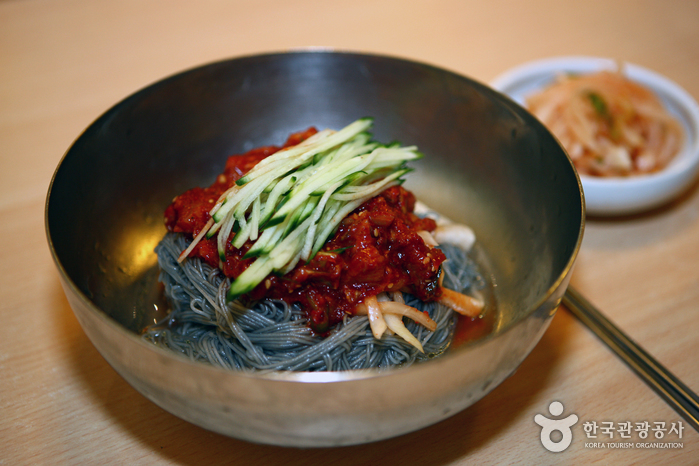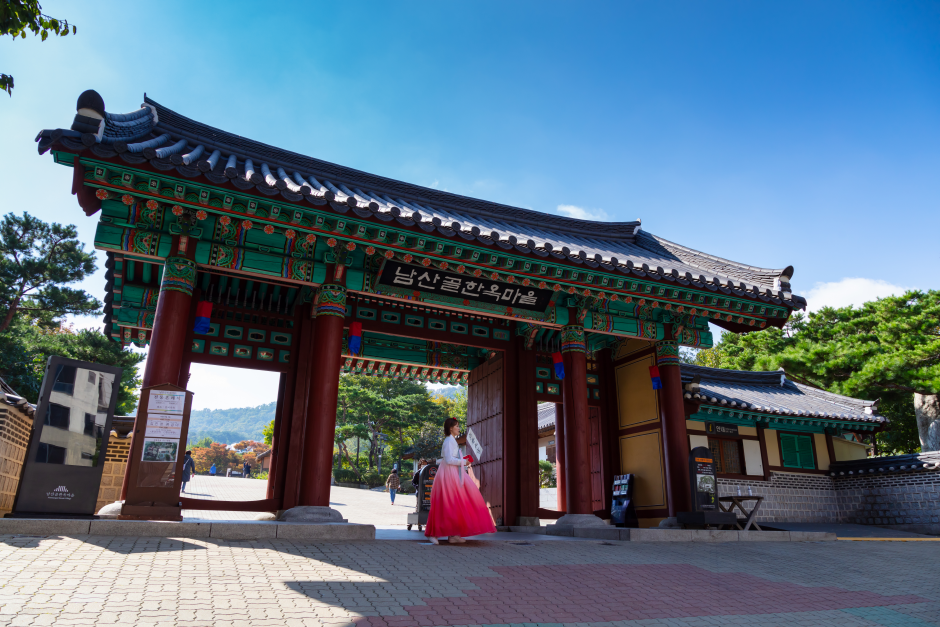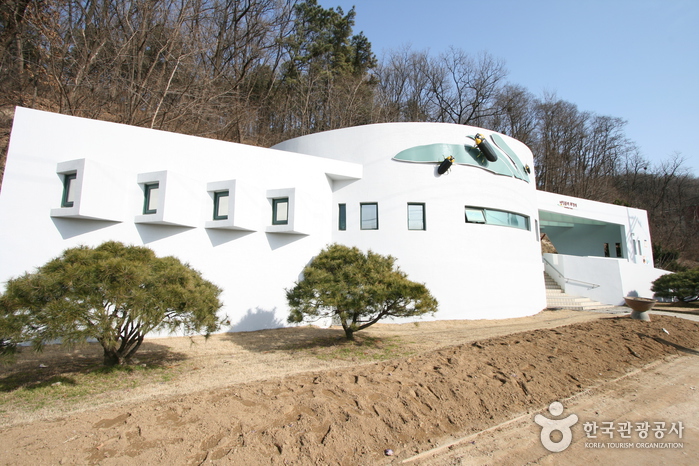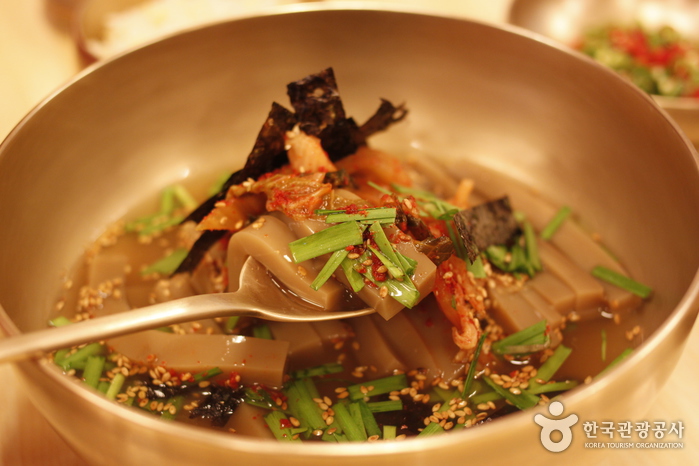Eider - Newcore Pyeongchon Branch [Tax Refund Shop] (아이더 뉴코아 평촌)
19.4Km 2024-06-27
119, Dongan-ro, Dongan-gu, Anyang-si, Gyeonggi-do
-
Artria - Newcore Pyeongchon Branch [Tax Refund Shop] (아트리아 뉴코아 평촌)
19.4Km 2024-06-26
119, Dongan-ro, Dongan-gu, Anyang-si, Gyeonggi-do
-
Zahir - Newcore Pyeongchon Branch [Tax Refund Shop] (자히르 뉴코아 평촌)
19.4Km 2024-06-27
119, Dongan-ro, Dongan-gu, Anyang-si, Gyeonggi-do
-
NIX - Newcore Pyeongchon Branch [Tax Refund Shop] (닉스 뉴코아 평촌)
19.4Km 2024-06-27
119, Dongan-ro, Dongan-gu, Anyang-si, Gyeonggi-do
-
Ojang-dong Hamheung Naengmyeon (오장동 함흥냉면)
19.4Km 2024-02-22
108 Mareunnae-ro, Jung-gu, Seoul
Ojang-dong Hamheung Naengmyeon originated when grandma Han Hyesun, who migrated from Hamgyeongnam-do to Seoul during the Korean War, began selling Hamheung-style "nongma guksu (starch noodles)," eventually naming it Hamheung naengmyeon (Hamheung cold buckwheat noodles). Its signature dish, bibim naengmyeon (spicy buckwheat noodles), features chewy noodles infused with a tangy-sweet seasoning, showcasing the expertise behind its preparation. Alongside the flavorful broth served as a base, the menu also includes variations like hoe naengmyeon (cold buckwheat noodles with raw fish), mul laengmyeon (cold buckwheat noodles), suyuk (boiled pork slices) and mandu.
Namsangol Hanok Village (남산골한옥마을)
19.4Km 2025-07-14
28 Toegye-ro 34-gil, Jung-gu, Seoul
Namsangol Hanok Village opened in 1998 on the northern side of Namsan Mountain in the center of the capital. This village has five restored hanok (traditional Korean house) premises, a pavilion, a traditional garden, a performance art stage, and a time capsule plaza, making it a perfect spot for locals and tourists to take a leisure walk. Upon entering from the front gate, visitors will get a taste of Korea's traditional life while escaping from bustling city life. The traditional garden with its pavilion and old houses creates a peaceful ambiance before the forested Namsan Mountain. A time capsule commemorating Seoul’s 600th anniversary was buried in 1994 at the highest point of the village and is scheduled to be reopened 400 years later in 2394.
The five hanok premises at Namsangol Hanok Village once belonged to aristocrats and government officials of the Joseon dynasty. Each house was originally located in a different neighborhood, but they were all moved to this area and restored to their original form. The houses were rebuilt using their original materials, except for one house, where the materials were too old and deteriorated to be reused. The premises were carefully restored and replicated according to their original form to depict the owners’ social class and personality. These buildings are now used as an exhibit to portray the living environment during the Joseon dynasty and as a venue for educational and cultural programs for children and tourists.
Some of the unique programs and activities to participate in include wearing hanbok, folding hanji (traditional Korean paper), writing in Korean, traditional tea ceremony, traditional etiquette school, and herbal medicine experience. There are also taekwondo demonstrations and other various performances held around the village. Visitors can also try traditional games such as yunnori (traditional board game), or understand more about the area through a guided tour.
KGC - Chungmu-ro Branch [Tax Refund Shop] (KGC 충무로점)
19.4Km 2024-04-16
235, Toegye-ro, Jung-gu, Seoul
-
Firefly Restroom (반딧불이화장실)
19.4Km 2019-10-31
166, Gwanggyosan-ro, Jangan-gu, Suwon-si, Gyeonggi-do
+82-31-228-2259
In honor of the 2002 FIFA World Cup Korea/Japan, Suwon adopted the idea of ‘restrooms with culture’- building beautiful, clean, brand new bathrooms at main tourist sites around the city. The Firefly Restroom, located near the Gwanggyo Reservoir, is the most beautiful of them all. It features a tunnel for the handicapped, a ceiling which filters light, a simple interior, a coffee vending machine, and a rest area.
Olive Young - Chungmuro Station Branch [Tax Refund Shop] (올리브영 충무로역)
19.4Km 2024-04-18
222, Toegye-ro, Jung-gu, Seoul
-
Gungnara Naengmyeon Mukbap (궁나라냉면묵밥)
19.4Km 2025-08-01
6, Jibong-ro 12-gil, Jongno-gu, Seoul
+82-2-744-4701
Gungnara Naengmyeon Mukbap originally opened in Ansan, serving up delicious meals of naengmyeon and mukbap. The restaurant became popular, and eventually moved to its current location in Seoul. The jiggly acorn jelly goes well wit the sweet and sour broth in mukbap, a favorite summer-time dish. Visitors can also order the dish with a warm broth for a delicious and healthy dish year round.
![Eider - Newcore Pyeongchon Branch [Tax Refund Shop] (아이더 뉴코아 평촌)](http://tong.visitkorea.or.kr/cms/resource/26/3314626_image2_1.jpg)
![Artria - Newcore Pyeongchon Branch [Tax Refund Shop] (아트리아 뉴코아 평촌)](http://tong.visitkorea.or.kr/cms/resource/71/3312871_image2_1.jpg)
![Zahir - Newcore Pyeongchon Branch [Tax Refund Shop] (자히르 뉴코아 평촌)](http://tong.visitkorea.or.kr/cms/resource/26/3314726_image2_1.jpg)
![NIX - Newcore Pyeongchon Branch [Tax Refund Shop] (닉스 뉴코아 평촌)](http://tong.visitkorea.or.kr/cms/resource/82/3314282_image2_1.jpg)


![KGC - Chungmu-ro Branch [Tax Refund Shop] (KGC 충무로점)](http://tong.visitkorea.or.kr/cms/resource/71/2878671_image2_1.jpg)

![Olive Young - Chungmuro Station Branch [Tax Refund Shop] (올리브영 충무로역)](http://tong.visitkorea.or.kr/cms/resource/68/2888868_image2_1.jpg)

 English
English
 한국어
한국어 日本語
日本語 中文(简体)
中文(简体) Deutsch
Deutsch Français
Français Español
Español Русский
Русский